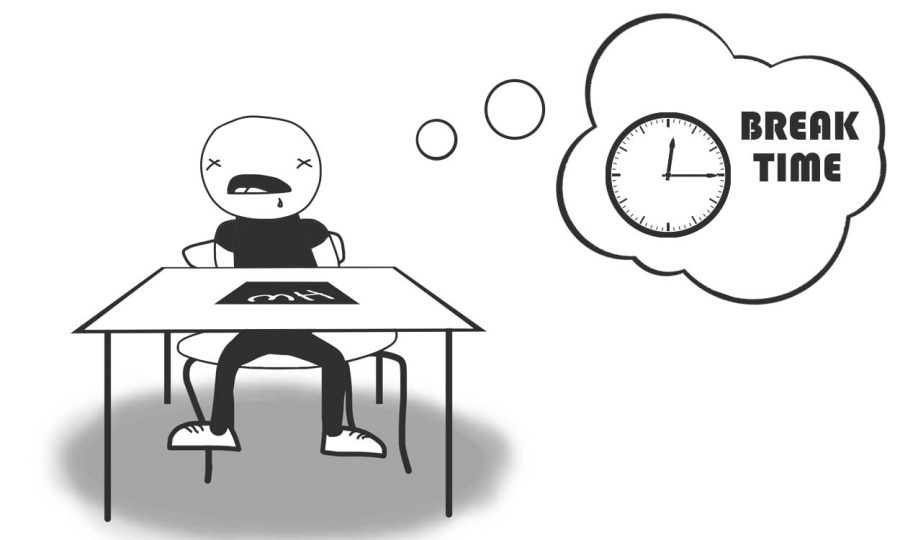Five-minute breaks should be mandatory during block periods
Short breaks allow students’ brains to remain receptive, retain copious amounts of information during long lectures
Nearly every student can relate to feeling sleepy or spacing out in the middle of a lecture, and it is not always the student’s fault. With 90-minute classes, it is difficult for students to stay awake and focused throughout the entire period while glued to a desk; to alleviate this, five-minute breaks during 90-minute block periods should be mandatory.
Students sleeping in the middle of class has become a daily sight that ceases to surprise anyone.
The problem with inattentive students has gotten to a point to which some teachers do not even bother redirecting sleeping students’ attention, knowing that it would be useless. Implementing five-minute breaks would not only benefit the students by giving them a chance to stretch and relax after having to retain tons of information, but it would also allow teachers to take a break and prepare their lectures.
A University of Illinois study strengthened the theory that the brain gradually becomes less apt at absorbing information over extended periods of time. The study contained the idea that the brain is built to detect and respond to change, suggesting that prolonged attention to a single task can negatively affect the brain’s performance. Having time to relax and stretch during class is necessary in order for students to better retain knowledge and succeed in school.
Another benefit of allotting time for breaks is that teachers who do so tend to have closer relationships with their students.
Likewise, students are given an opportunity to bond more with their peers. As a result, students feel closer with their teachers and their classmates, which makes them less afraid of being judged in class and more likely to speak up and voice their opinions or participate.
Teachers can provide a more comfortable learning environment for students simply by allowing them to talk amongst each other during these short intermissions.
Trying to focus for a whole block period is unreasonable to ask of students. According to scholarships.com, students retain information best in blocks of 45 minutes or less. Five minute breaks would allow teachers to cut each block class into two 45-minute periods, therefore comfortably satisfying students’ attention spans and helping them retain more of the information learned in class.
Some argue that taking away five educational minutes from every class period adds up to a lot of time, significantly decreasing the amount of instructional time.
The reality is that although this is true, students cannot be expected to stay focused for 90 minutes without a break. The results of this reform would be more attentive students, especially during periods during which the majority of the time is spent lecturing. This would then result in less time for students to be confused over homework and improved test scores. The time set aside for breaks may add up, but giving up a mere five minutes to allow students to refocus and regain themselves far outweighs the time a student may spend spacing out or falling asleep.
Your donation will support the student journalists of Palo Alto High School's newspaper

